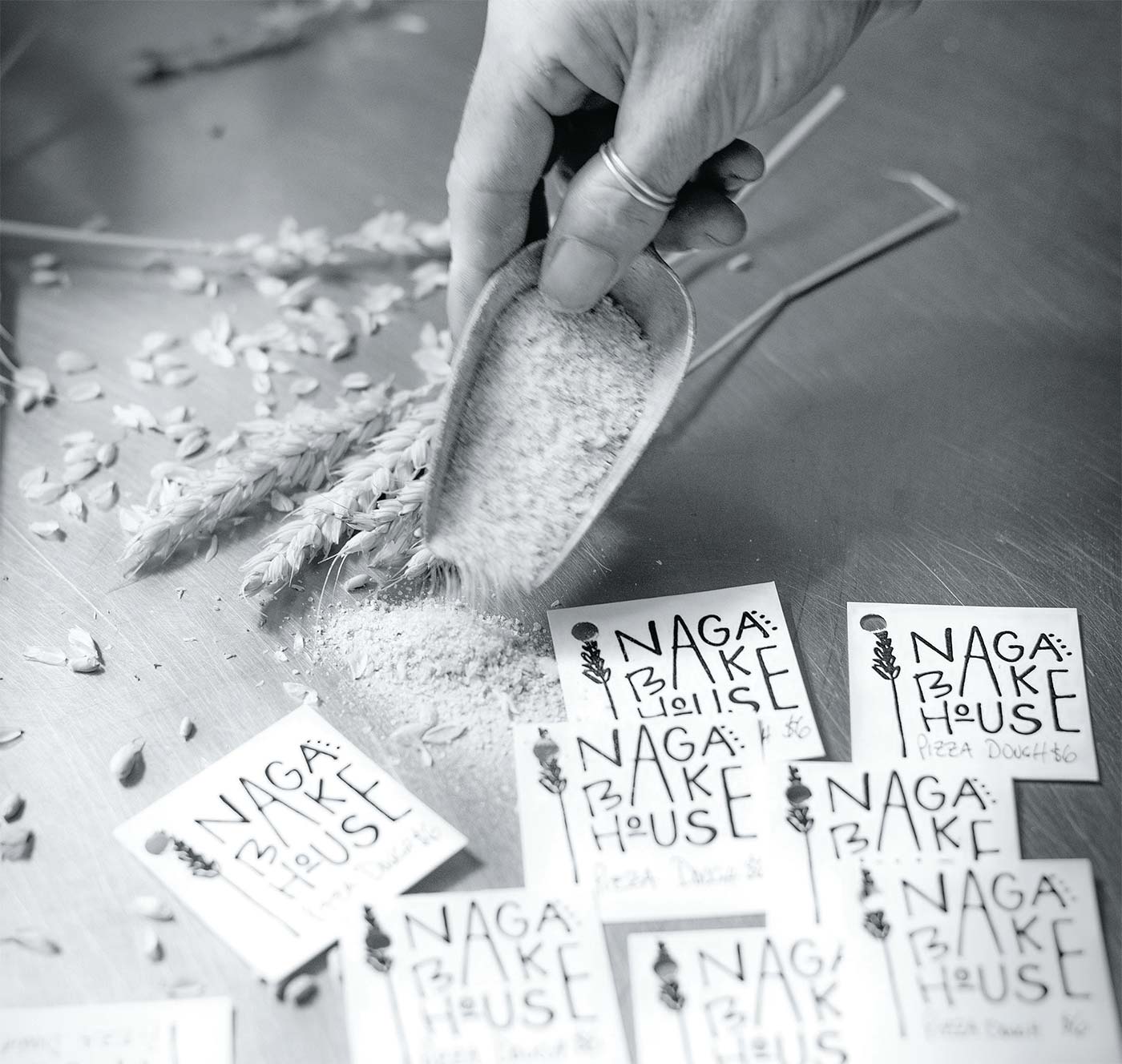Naga Bakehouse
Twenty-one years ago, we started a fledgling business, a wood-fired bakery, to earn a living while raising our kids in a family business. “Naga” stands for NAtural Grain Alchemy, the magical process of changing something common into something invaluable.
We also started a journey that sent us back in time to see how a small, hilltop business in a town of 740 people could grow to be a player in an orchestra of growers, millers, bakers, brewers, and distillers, all working to re-localize the regional food system and to grow a grain network in Vermont and beyond.Julie with freshly ground whole wheat flour.
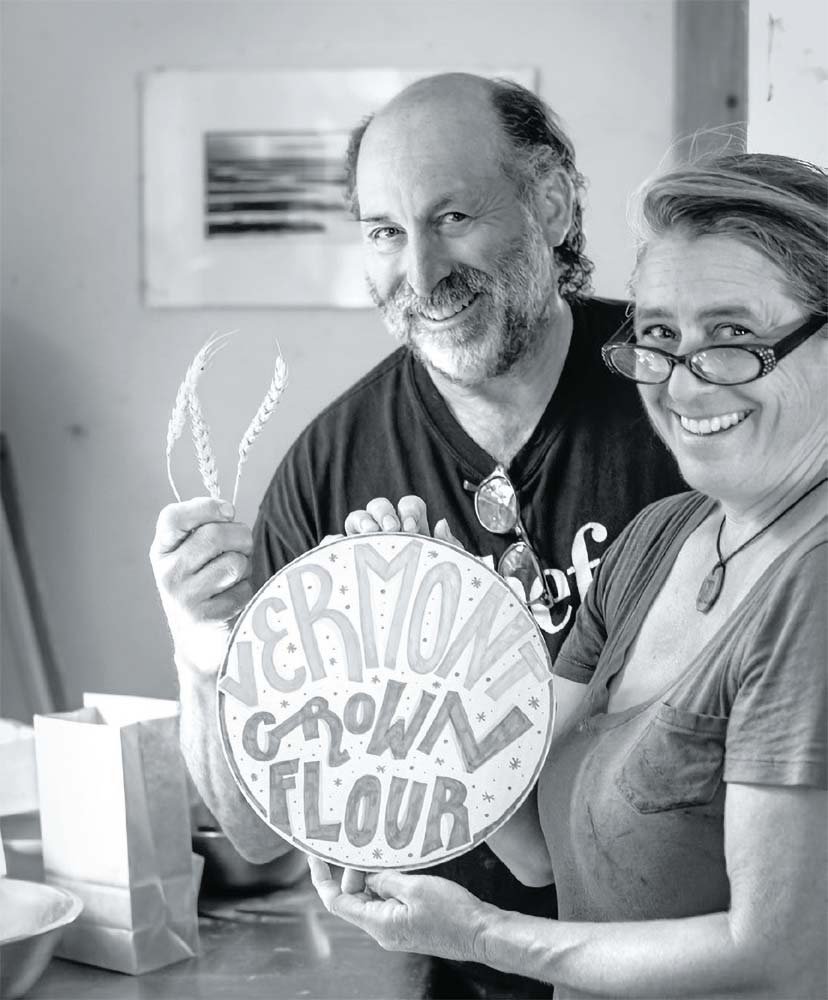
Locally grown, locally ground in Vermont! Doug Freilich and Julie Sperling work to reestablish a vibrant grainshed. PHOTO: JOAN K. LENTINI
THE OLD INFORMS THE NEW
We are equally inspired by the Ben and Jerry’s motto “If it’s not fun, why do it?” and by the spirit of Bread and Puppet, who believe that “Art, like good bread, should be accessible to all.” These sentiments are behind everything Naga encapsulates; work is important, yet it must also be beautiful, inspirational, good for the planet and people, with a bit of fun mixed in.
Our wood-fired oven is beautiful. Constructed in 2003, it was built by volunteers led by master oven builder Alan Scott, whose book The Bread Builders was an inspiration to thousands and helped spawn the American Bread Renaissance. Eventually we brought in master oven builder Peter Moore for an upgrade. The new oven was built with 200-year-old brick from a collapsed building in New Hampshire. The baking shelf is black marble from northern Vermont, called “Isle La Motte black,” with 450-million-year-old fossil marks on the stone.
The timber-frame bakery is rustic, colorful, inviting, and warm; its walls painted bright orange with swirls of color, folksy posters, and ribbons from past awards. The ancient Hobart mixer is covered with stickers from local food producers. A nearby sign reads “Edible Art.”
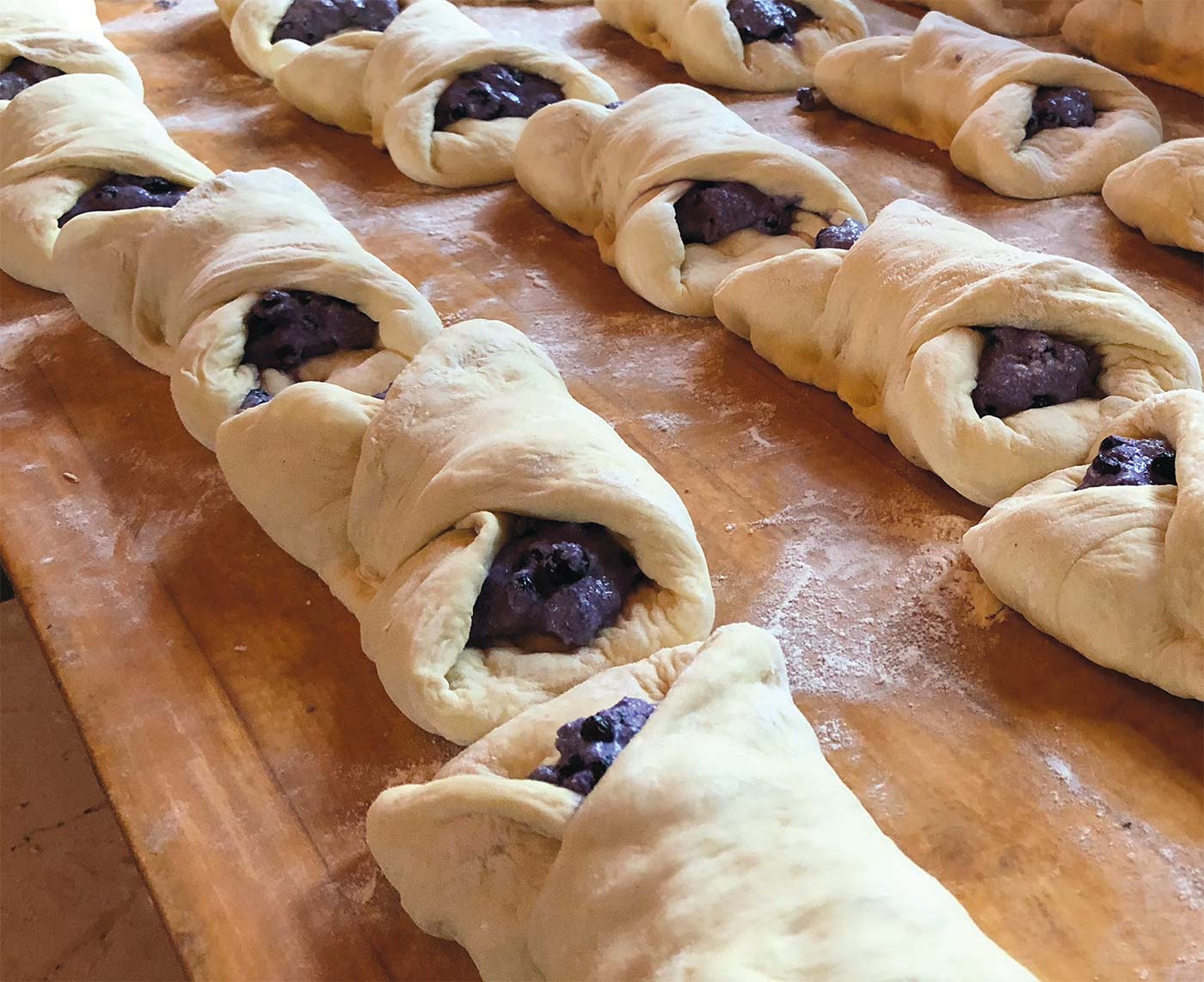
Locally sourced blueberries from Smokey House Center end up in Naga’s blueberry and ricotta-stuffed breads. Here they are, ready for the wood-fired oven! PHOTO: TIKKO SPERLING-FREILICH
BREAD FOR THE PEOPLE
In the early 2000s, several changes were afoot in the food and agriculture landscape. Michael Pollan’s The Omnivore’s Dilemma argued that people should know where their food comes from. Soon after, the term locavore was coined by Chef Jessica Prentice, which refers to people who eat locally, and know how and where their food is produced. This sentiment caught on. In 2007, locavore was the pick of the New Oxford American Dictionary for “word of the year.”
Inspired by these ideas, we strove to bring our production as close to home as possible—growing, sourcing, and gathering the majority of our ingredients from our neighborhood. Because Naga is literally off the beaten path, we chose a direct-to-consumer business model, participating in 9 farmers’ markets per week in 4 states and 25 larger food festivals annually. At the end of each day’s market, we would buy or barter from farmers, using what we gleaned for the next day’s bread. We built relationships with growers and eaters across five states.
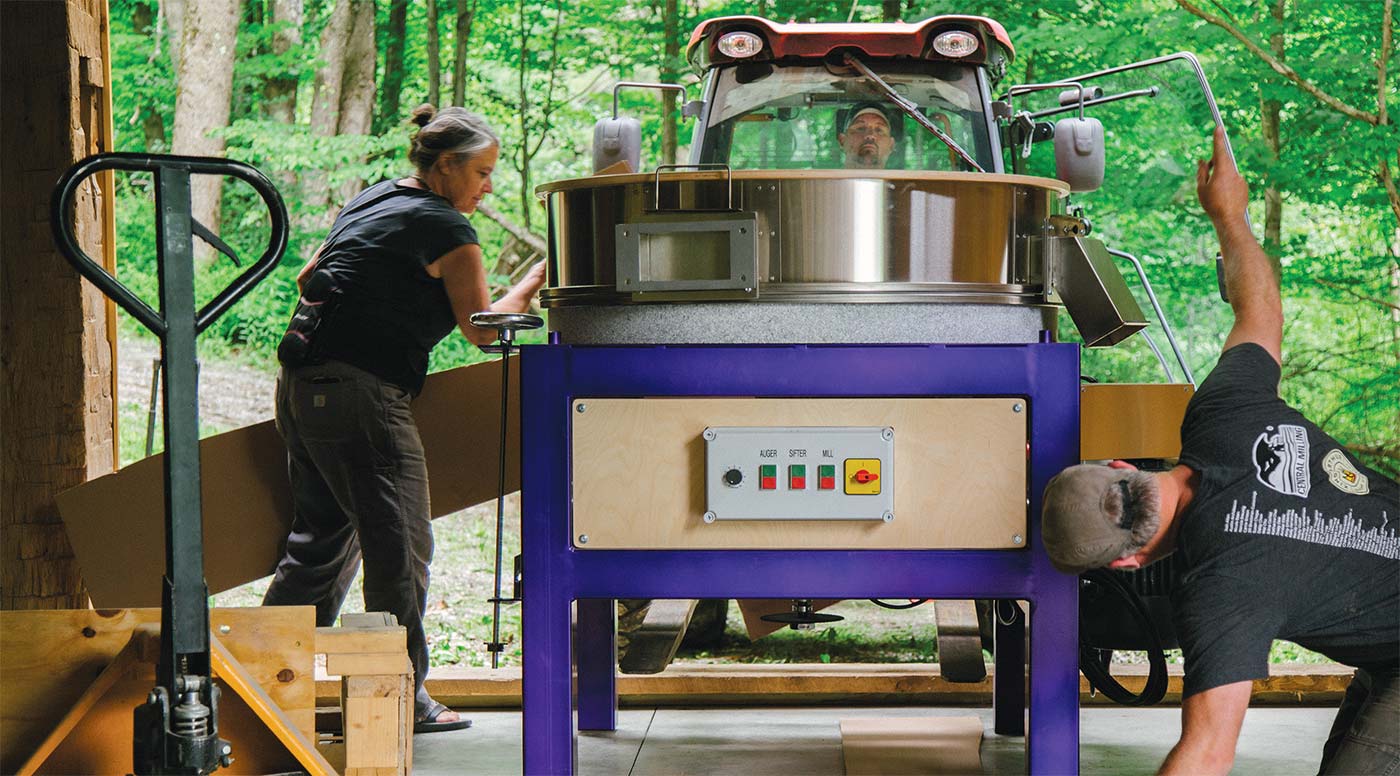
Julie Sperling assists Andrew Heyn with the placement of Naga Bakehouse’s New American Stone Mill. PHOTO: COURTESY NAGA BAKEHOUSE
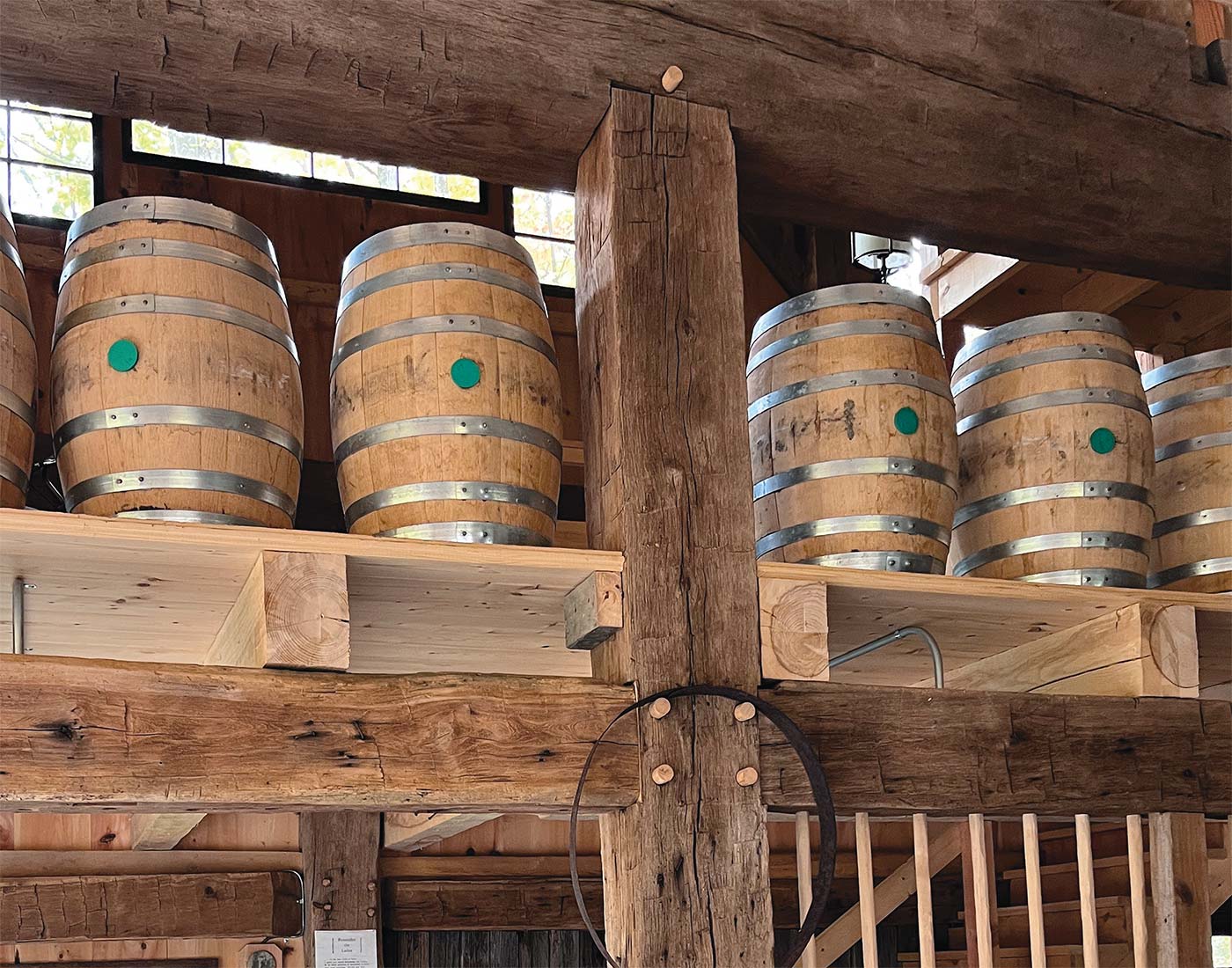
The interior of the old barn has massive hewn oak posts and beams and is home to Naga Bakehouse’s new gristmill. PHOTO: ELLIS SPERLING-FREILICH
WHERE'S THE BEEF?
In Vermont, it’s relatively easy to source fruits and veggies, farmstead cheeses, and maple syrup. In the past, what was not easy to source was local flour! This started us on a search to understand the story of grain. Through reading everything we could get our hands on, attending workshops, and participating in farm, mill, and bakery tours we educated ourselves on all things grain and flour. Our search led us to UVM-sponsored public meetings about growing grain for dairy herds, spearheaded by agronomist Heather Darby. We joined a nascent discussion between farmers and bakers. At that time, there were no millers in the room, or in the state. We became early board members of the newly formed Northern Grain Growers Association.
“This spectacular barn will once again serve as an important agricultural work building and provide the heart of Naga’s newest enterprise: a regional flour mill.” –Julie Sperling and Doug Freilich
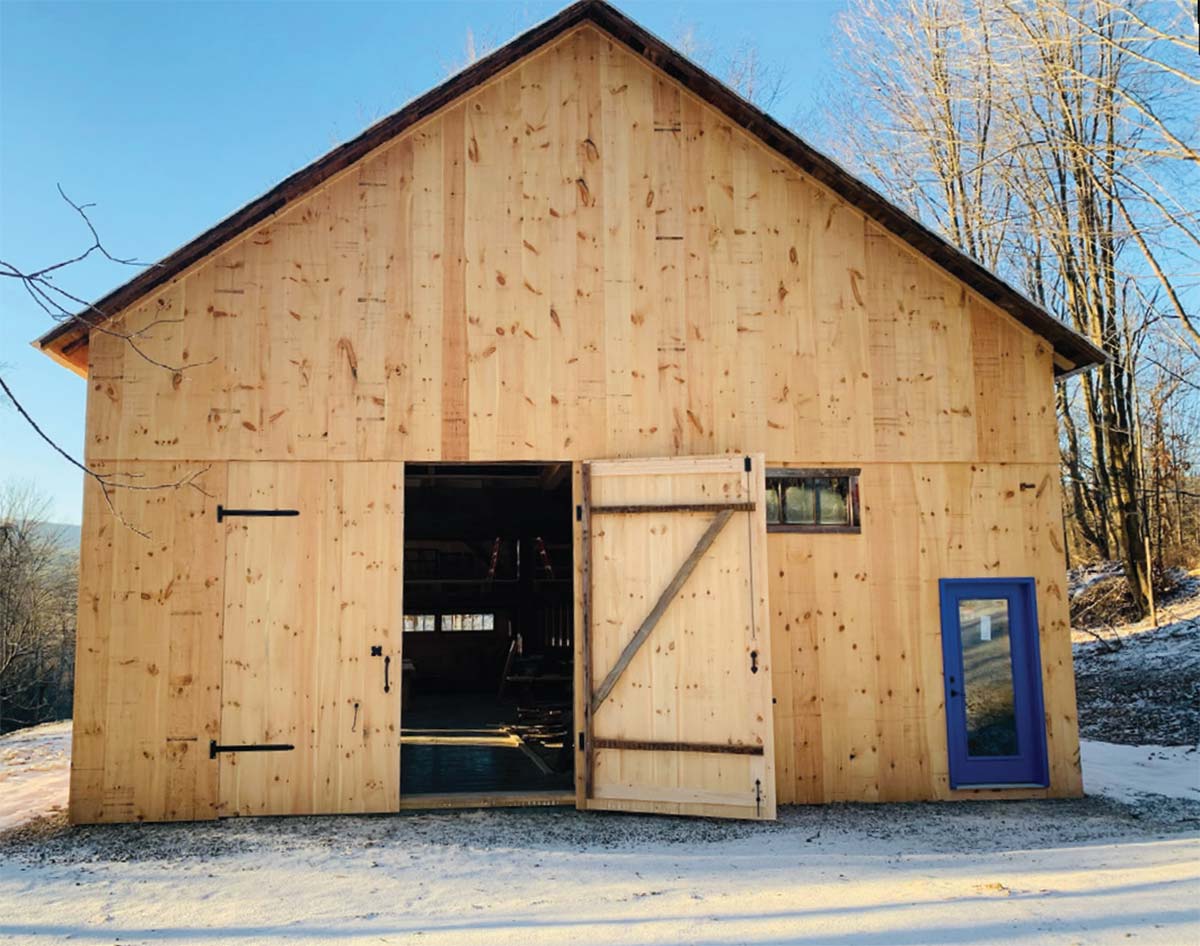
PHOTO: TIKKO SPERLING-FREILICH
RE-BARNING!
We are witnessing a rebirth of interest in all things local, including grains. After decades of disinvestment in regional grain production and processing, we are scaling up our milling operations and joining a new movement to rebuild the grain infrastructure that is a crucial piece of a re-localized food system.
Our new mill is in a reconstructed 300-year-old barn moved to Middletown Springs from western New York in 2021. The massive hand-hewn oak barn was days away from being burned and buried. Instead, rather than being reconstructed as someone’s pool house, this spectacular barn will once again serve as an important agricultural work building and provide the heart of Naga’s newest enterprise: a regional flour mill.
Our focus is now encouraging additional farms in southern Vermont to add grains to their operations to help build a resilient grain economy. Our brightly painted, electric purple New American Stone Mill will help us do just that.
The story we are writing has a beginning and an end, a history and a future. And with two daughters who are as committed as we are to local food systems, we’re confident that Naga Bakehouse will be around for the next century.


